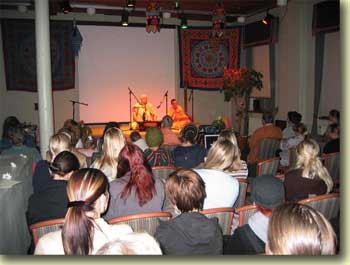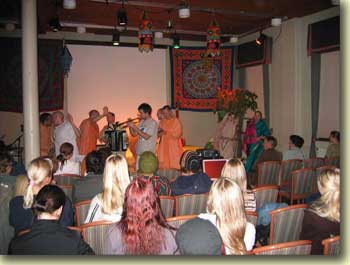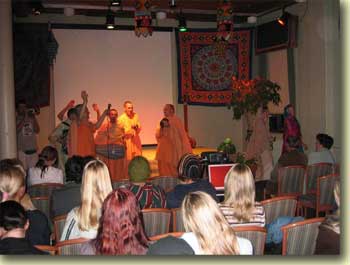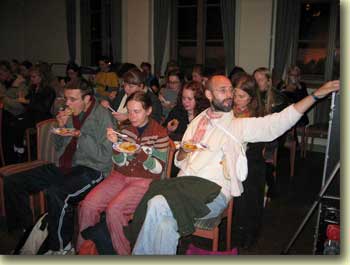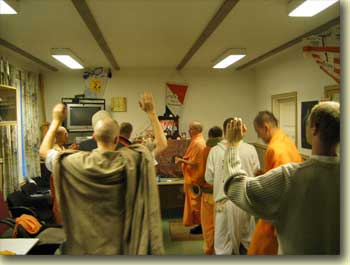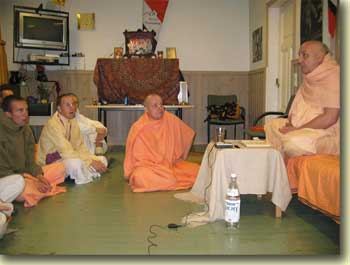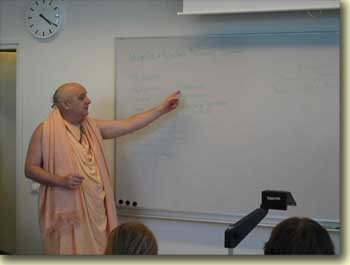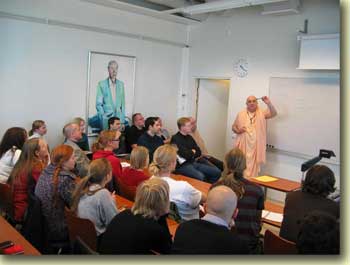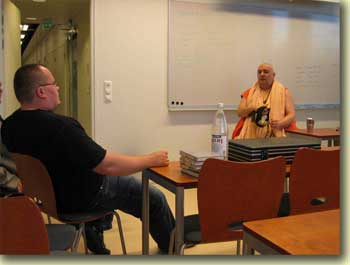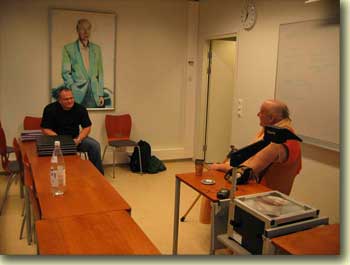
Helsinki, Finland
1 October 2004
Preaching in Turku, Finland
29-30 September
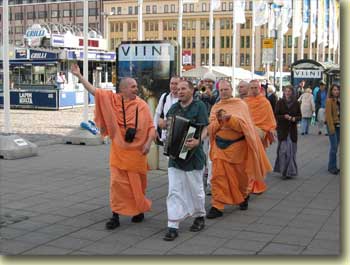
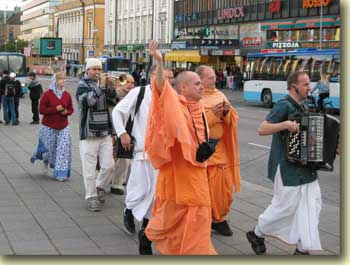
Harinama Sankirtana in the city of Turku. By way of street
chanting and book distribution, the devotees invited people to attend the India
Experience program that was held on the evening of 29 September.
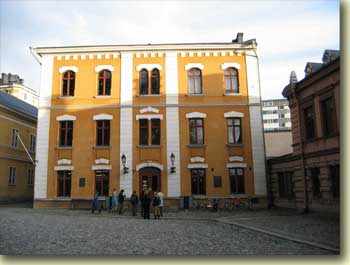 |
The India Experience program has toured Finland for more
than a decade. In Turku it took place in this historic public hall. |
| Dance, bhajana, lecture, a multimedia slideshow, kirtana,
and prasadam--all this is presented by the India Experience to an eager
public. |
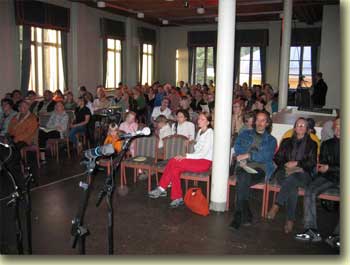 |
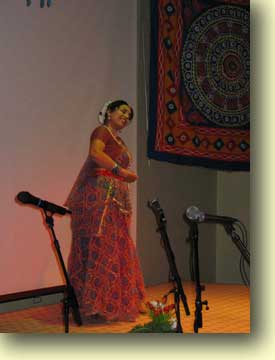 |
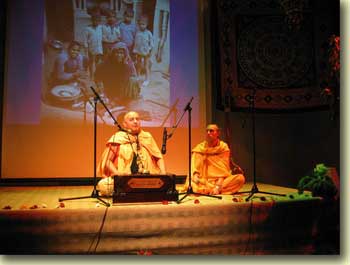 |
| After the program is over, the devotees load the equipment
into this convoy of sankirtana vehicles. |
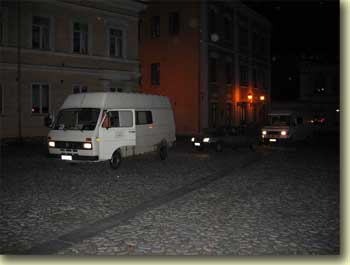 |
Morning program. The India Experience team stayed in a large building in
the woods outside of Turku. The building normally serves as the clubhouse of
a hiking organization.
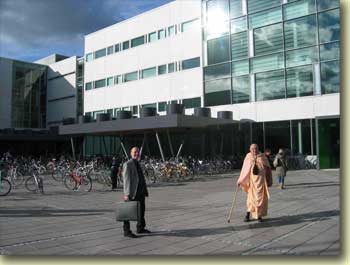 |
Standing before the University of Turku. I am with Tattavada
Prabhu, the Helsinki temple president. |
|
Today, on the afternoon of 30 September, I am to give a talk to the
students and faculty of the philosophy department.
|
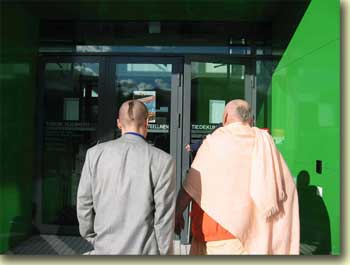 |
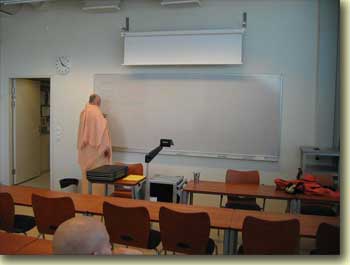 |
Before the attendees arrive, I write key points of my
presentation on the whiteboard. |
| Both the devotees and the philosophy department faculty
were surprised at how many attendees there were for my talk. Attendance
was voluntary; students were not obliged by the university to come. But
so many came that extra chairs had to be brought in from other rooms. |
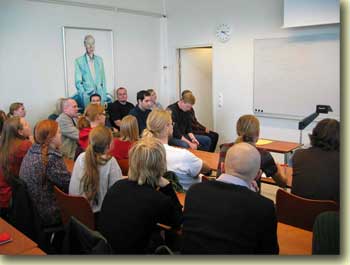 |
Here I explain that empiricism relies upon the "correspondence theory
of knowledge", which holds that our language must correspond to physical
objects readily evident to the senses in order for us to say anything true and
meaningful. For example, the term "green felt pen" makes valid sense
because it corresponds to a physically apparent green felt pen. Then I went
on to tell why this theory of knowledge is deficient.
 |
After the lecture, Tattvavada Prabhu and I met with faculty
members for herbal tea and prasadam cake and cookies. |
After the tea party, I spent some time with Juha-Pekka Pellonpaa, a member
of the physics faculty who holds a Ph.D. in quantum physics. His specialty is
quantum field theory, which is concerned with the mathematical "ether"
in which quantum events take place. We had a lively discussion.
| Here Dr. Pellonpaa explains the workings of a special
microscope that is used to "see" objects as small as a single
atom. The microscope has an extremely tiny electrified needle as its sensor.
When the needle is brought near an atom, the microscope registers an image
that looks like a ball. "We call these balls atoms," Pellonpaa
explained. "However, when we change the microscope's needle, then the
image of the ball looks different from the way it did with the old needle.
So I don't know that we are really seeing atoms with this instrument." |
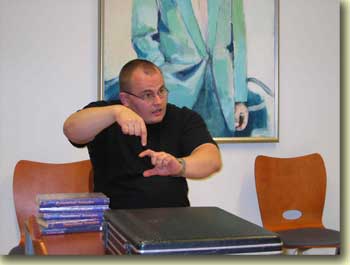 |
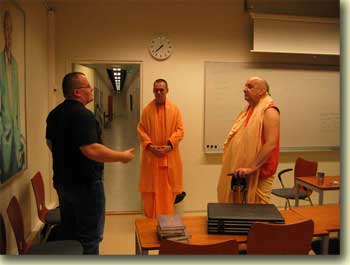 |
Dr. Pellonpaa told me that the modern conception of the
size of the universe is based upon assumptions that he personally is not
convinced of. "I don't believe in the Big Bang theory," he said.
He is very interested in the Vedas and had many questions about Vedic atomism
and cosmology. |
<< Back







